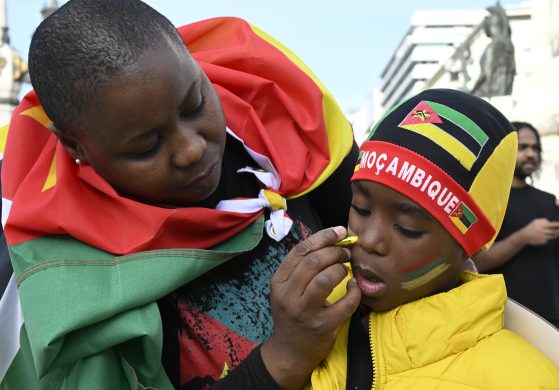De fleste danskere kender Gambia som et attraktivt turistmål med flotte Atlanterhavs-strande og masser af sol – men klimaet er et stort og voksende problem for Afrikas mindste nation, hvor næsten 60 procent af indbyggerne er ramt af fødevaremangel.
SEREKUNDA (Gambia), 17 May 2012 (IRIN): In 2011, the rains failed in the Central River region of The Gambia, where Mawdou Danso, a farmer, struggled to raise a crop big enough to tide him over to the next harvest.
He invested in an early-maturing, high-yielding (højt ydende) rice called Nerica (New Rice for Africa), which had recently became available and promised to fit in well with the erratic (sporadiske) rainfall patterns.
He ended up harvesting very little.
“I had only two months of feed for my 48-member family from all the lands I put under cultivation, compared to last year when I had 15 [50kg] bags of Nerica and able to have six months of food stock,” said Mawdou.
“I can only manage to feed my family for the rest of the year by working for other people for survival… I do not have any money to invest in the next planting season.”
The rainfall has been too capricious (lunefuld) even for Nerica.
There is mounting concern that The Gambia, Africa’s smallest country, could face yet another shortfall in the 2012-2013 agricultural season in the production of rice, millet (hirse), maize and groundnuts, the main crops, crippling its efforts to become food secure.
The planting season has begun, yet there is a huge seed deficit.
“It is essential that farmers receive quality drought-tolerant seeds, as well as fertilizer and other production support by the end of May 2012 to start their next production campaign,” said Sonia Nguyen, a spokesperson for the UN Food and Agriculture Organization (FAO) in the Sahel.
Huge drop in food production
The Gambia, surrounded by Senegal, is part of the Sahel zone, and it too was affected by the late, erratic and unevenly distributed rainfall during the 2011-12 growing season.
Crop production is expected to drop by more than half compared to 2010, and by 50 percent compared to the five-year average, said Nguyen.
Patrick Ezeala, spokesperson for Oxfam America in The Gambia, said there had been huge declines in the main food crops: rice (- 79 percent), groundnut (- 67 percent) and early millet (- 53 percent).
“Coupled with this production drop, food prices have gone higher than normal, surpassing the high food prices experienced during the 2008 global food crisis. The drop in production combined with rising prices suggests that seed insecurity will increasingly become a challenge for farmers,” noted he.
A 50 kg bag of rice costs at least 5 US dolllar (27-28 DKR) more than it did in 2011. Even though The Gambia has made tremendous progress in poverty eradication since 2003, at least 48 percent of its population live on little more than one dollar a day.
Almost 60 percent of its people have been affected by food shortages – one million of the 1,7 million population are in need – according to the Agriculture Ministry.
Coverage of the food crisis in the Sahel has ramped up in the past few months, but attention has eluded The Gambia. Ezeala reasoned that perhaps the crisis in The Gambia was still developing into an emergency, and so had not yet caught the attention of the international media.
Aid workers say the government issued warnings early enough – the first one jointly with UN agencies in October 2011.
In January 2012, the government declared the 2011-12 agricultural season a failure and drew up a 23 million dollar plan with a list of actions to prepare farmers for the 2012-13 agricultural season.
In rural areas, 409.000 people (of whom 67.500 are children under 15 years) are seriously affected by the poor harvests. “Overall, vulnerability to food insecurity will continue to rise in the country,” UN agencies are warning.
Another about 192.850 people living in the poorest urban areas are still recovering from floods in previous seasons and are vulnerable to food insecurity, rising food prices and additional economic pressure from helping relatives in affected rural areas.
Shocks and funding issues
Though farming is the main source of livelihood for some 75 percent of the population, especially rural women, Gambian farmers have to rely on rainfall – only six percent of agricultural land is irrigated, mostly for growing rice in the Central River region.
Food production has fallen short of the country’s consumption needs for decades, according to FAO.
The gap has widened further in the past few years because of climatic shocks and “international donors’ reluctance to support a government accused of using strong-arm tactics in the face of opposition”, the agency said.
As in other parts of the Sahel zone, rains in The Gambia have been thin. Many climatologists have published data suggesting that the Sahel zone has not really recovered from a severe drought in the 1960s.
Can rains be thin?
Læs videre på
http://www.irinnews.org/Report/95473/GAMBIA-Small-country-with-a-big-crisis














